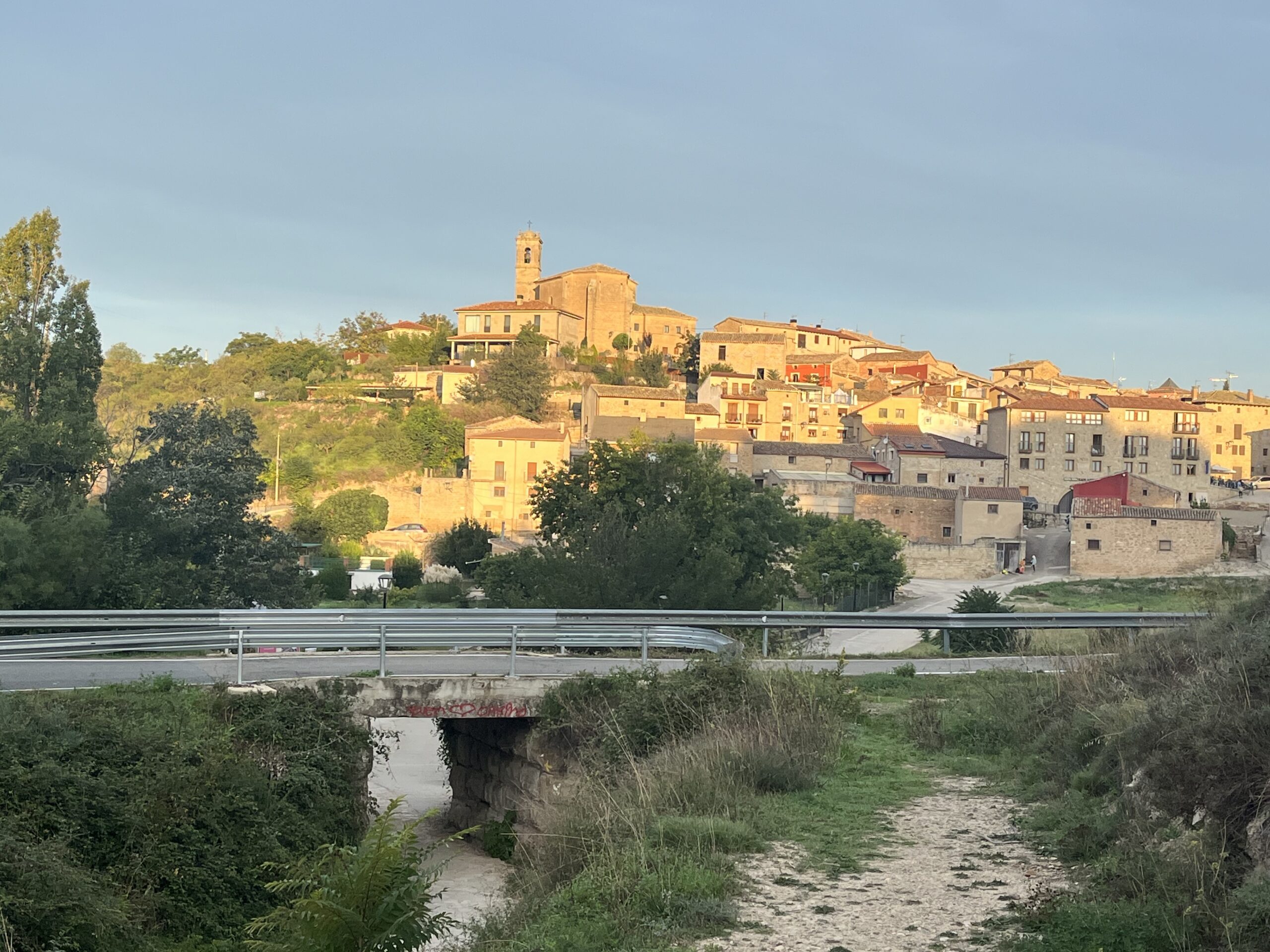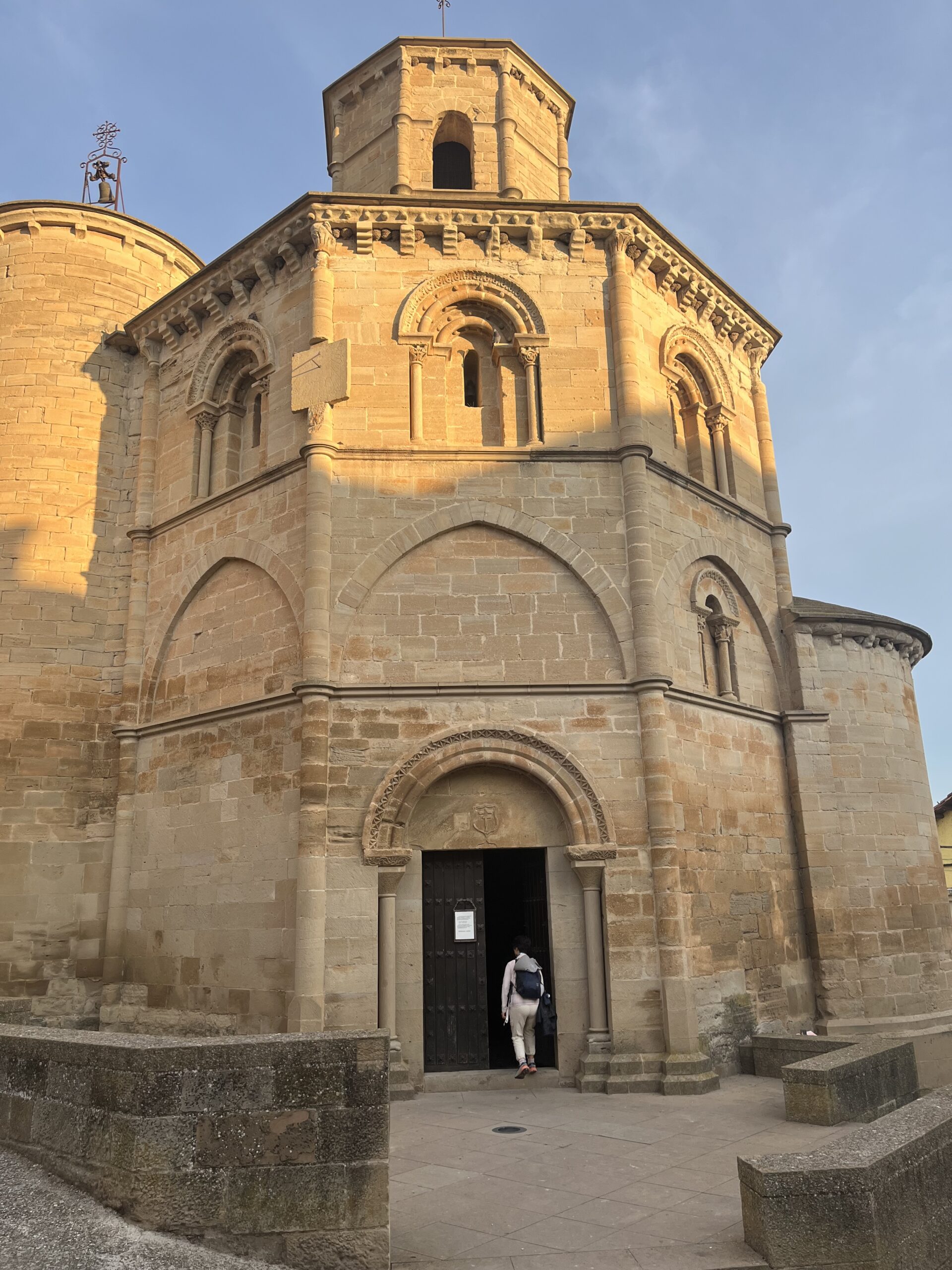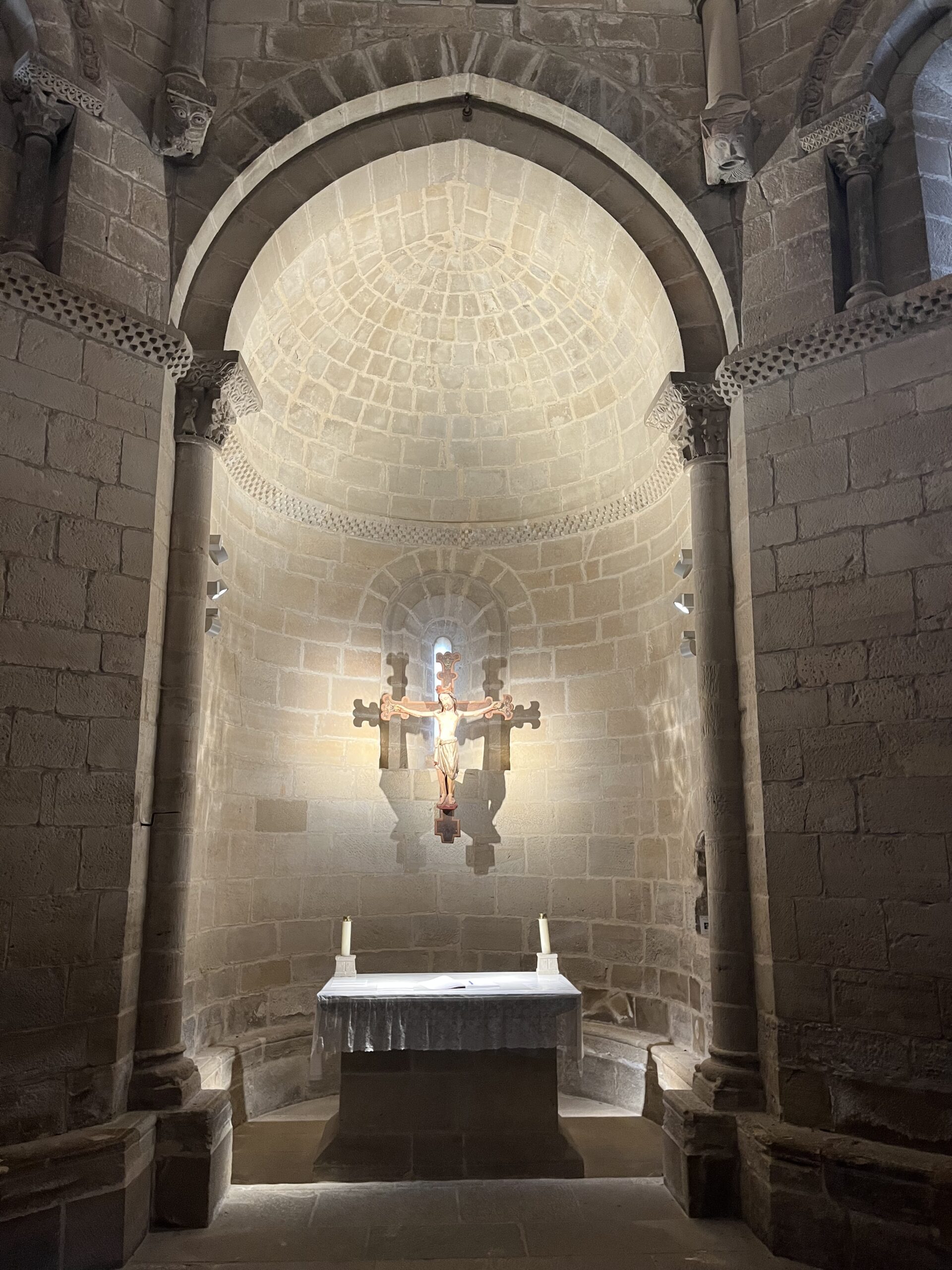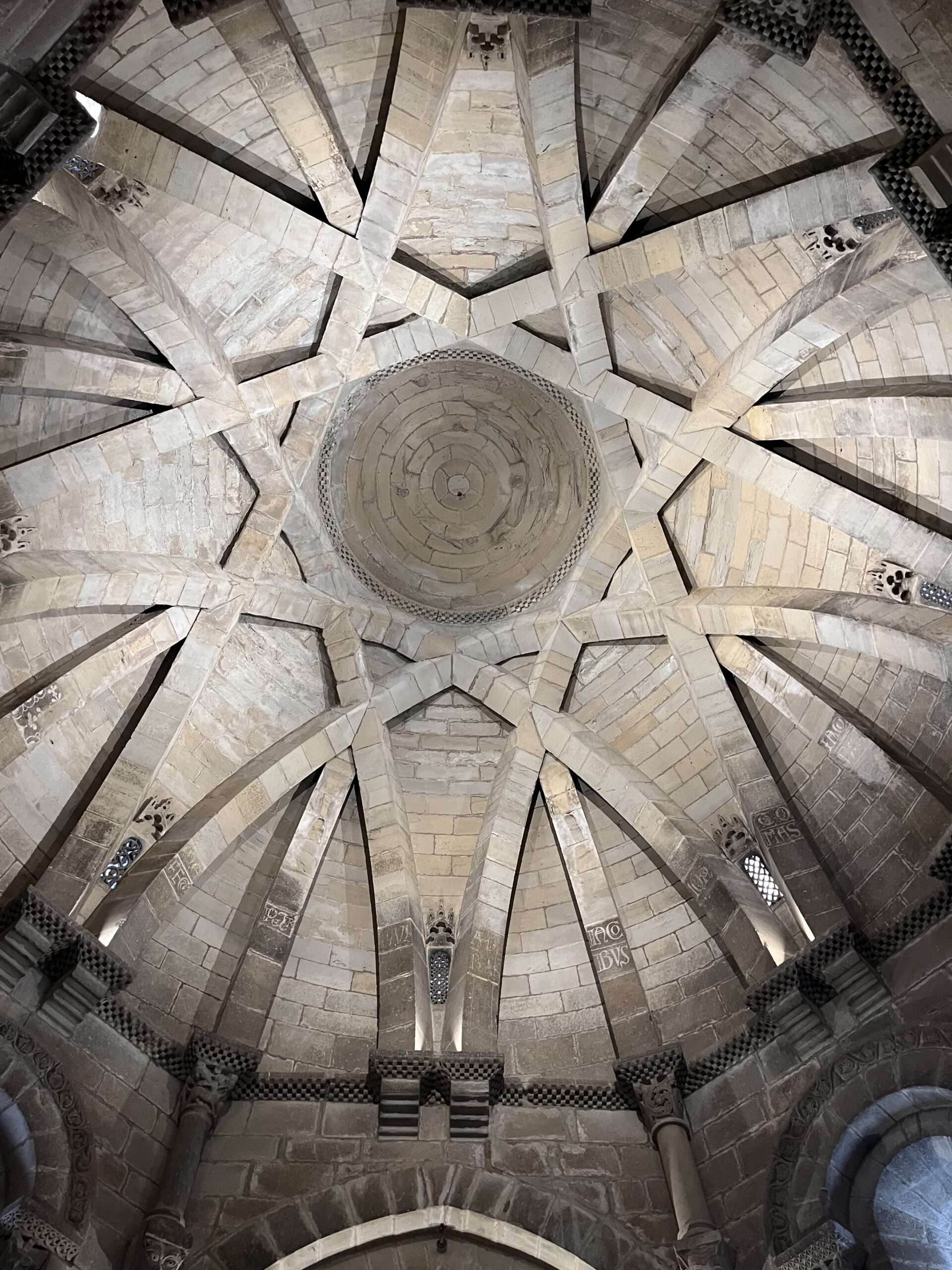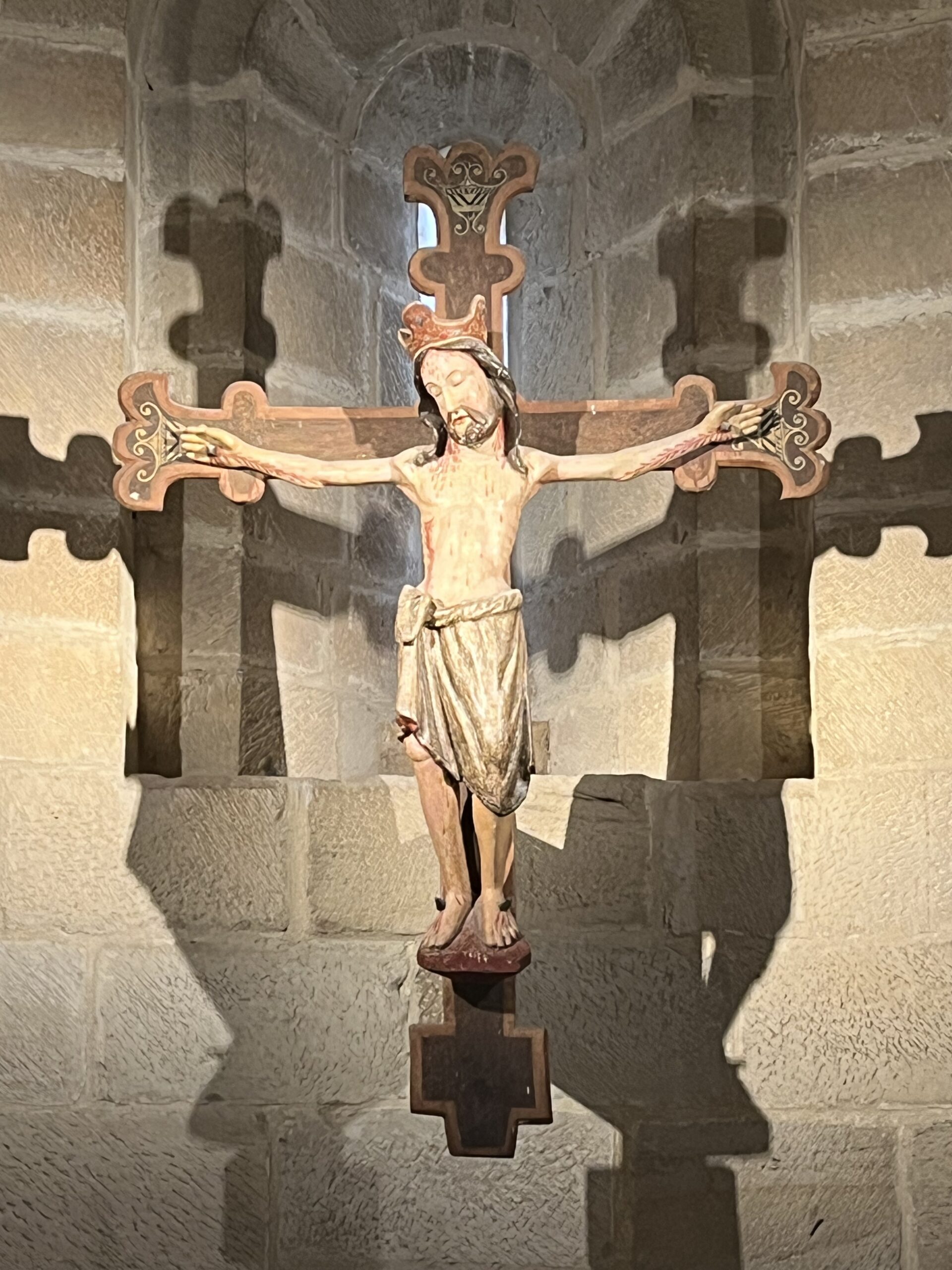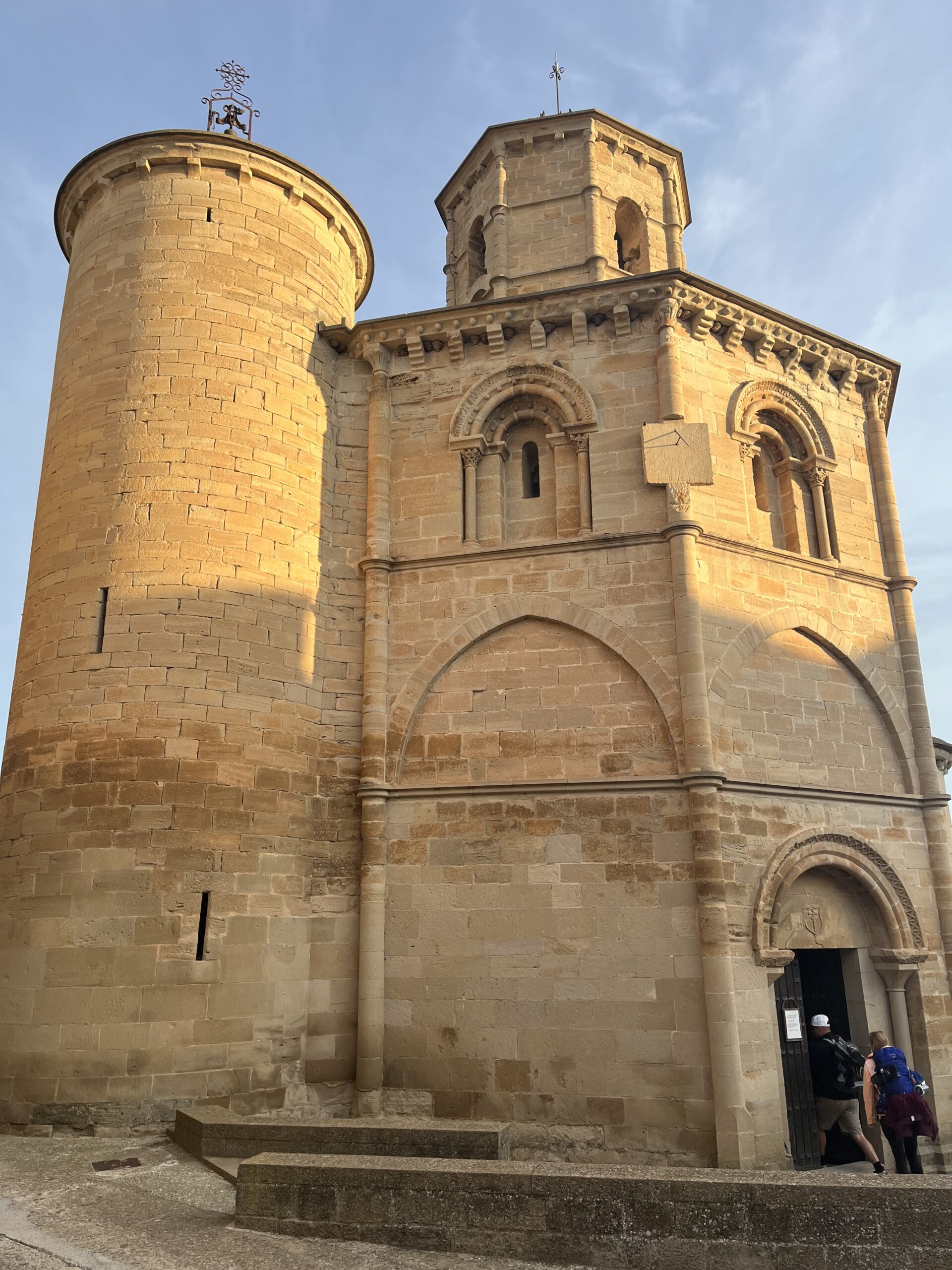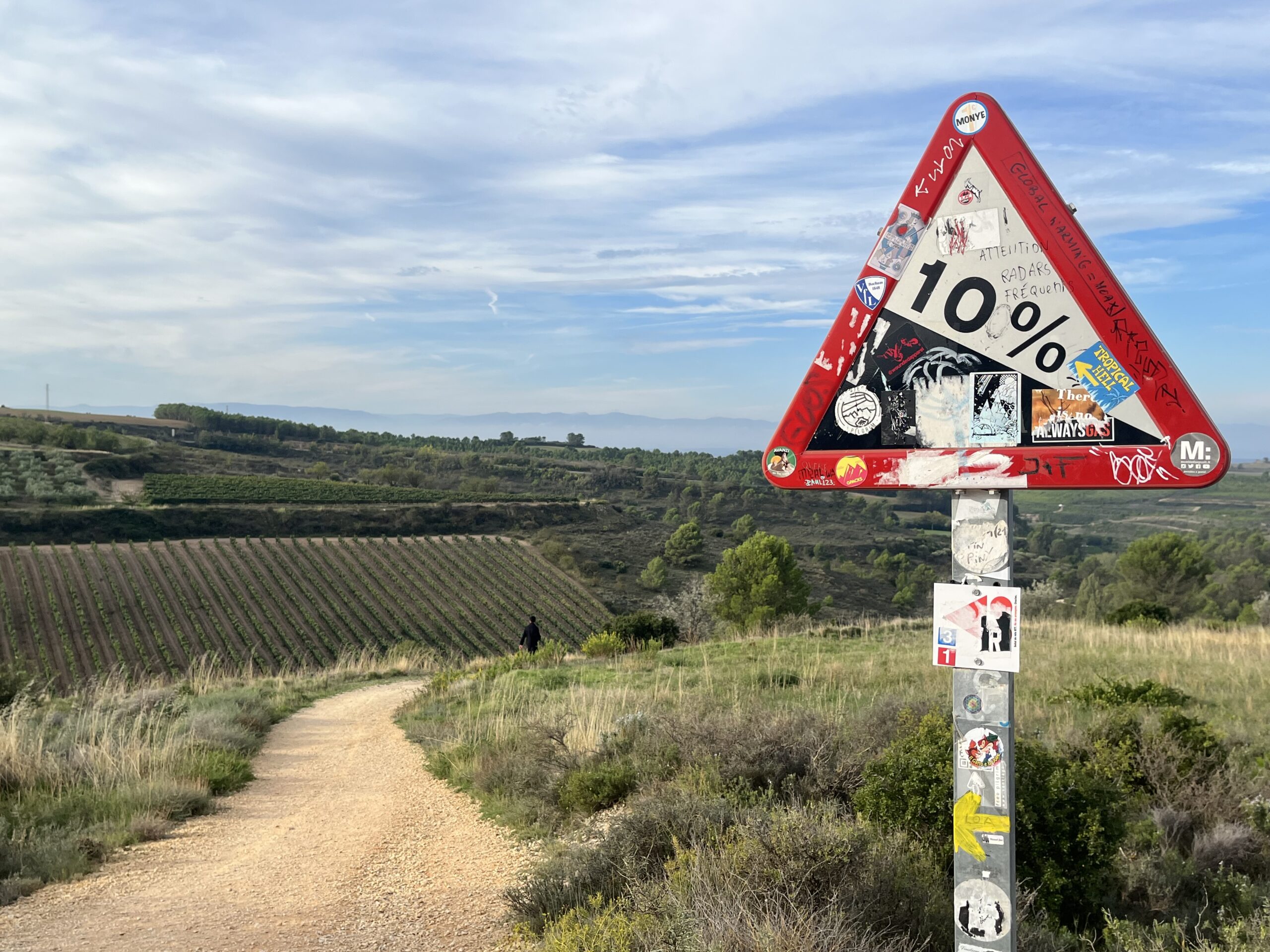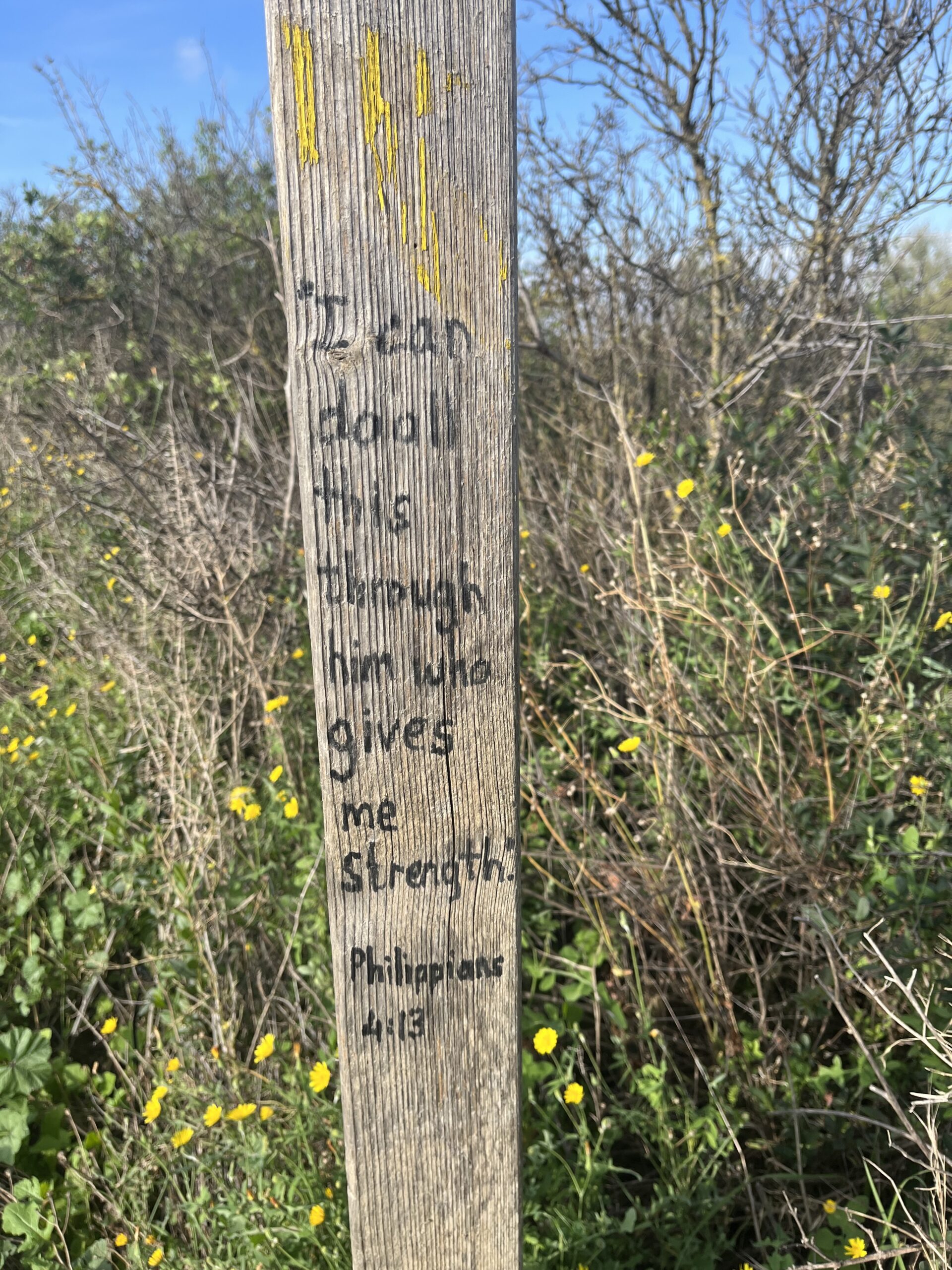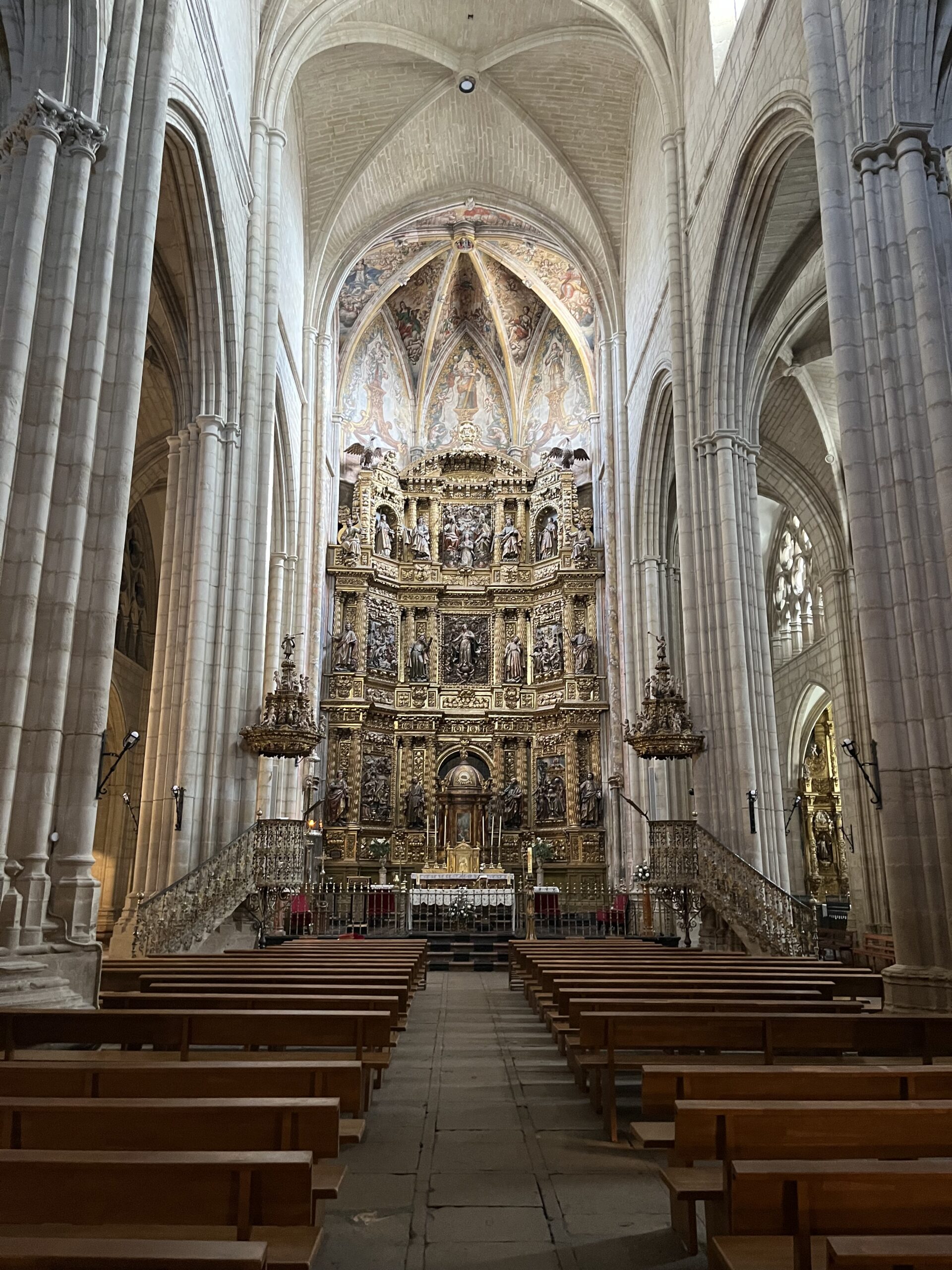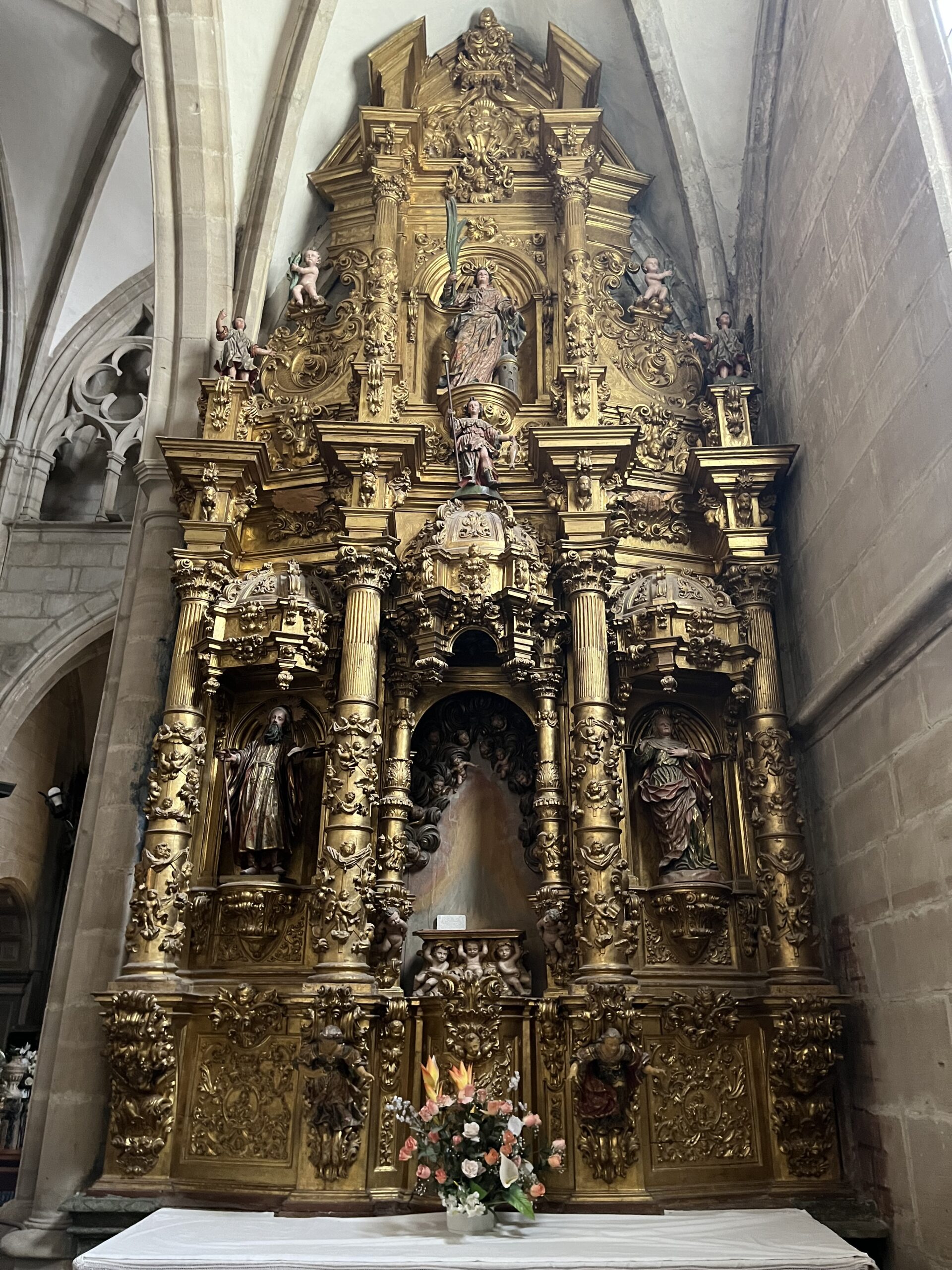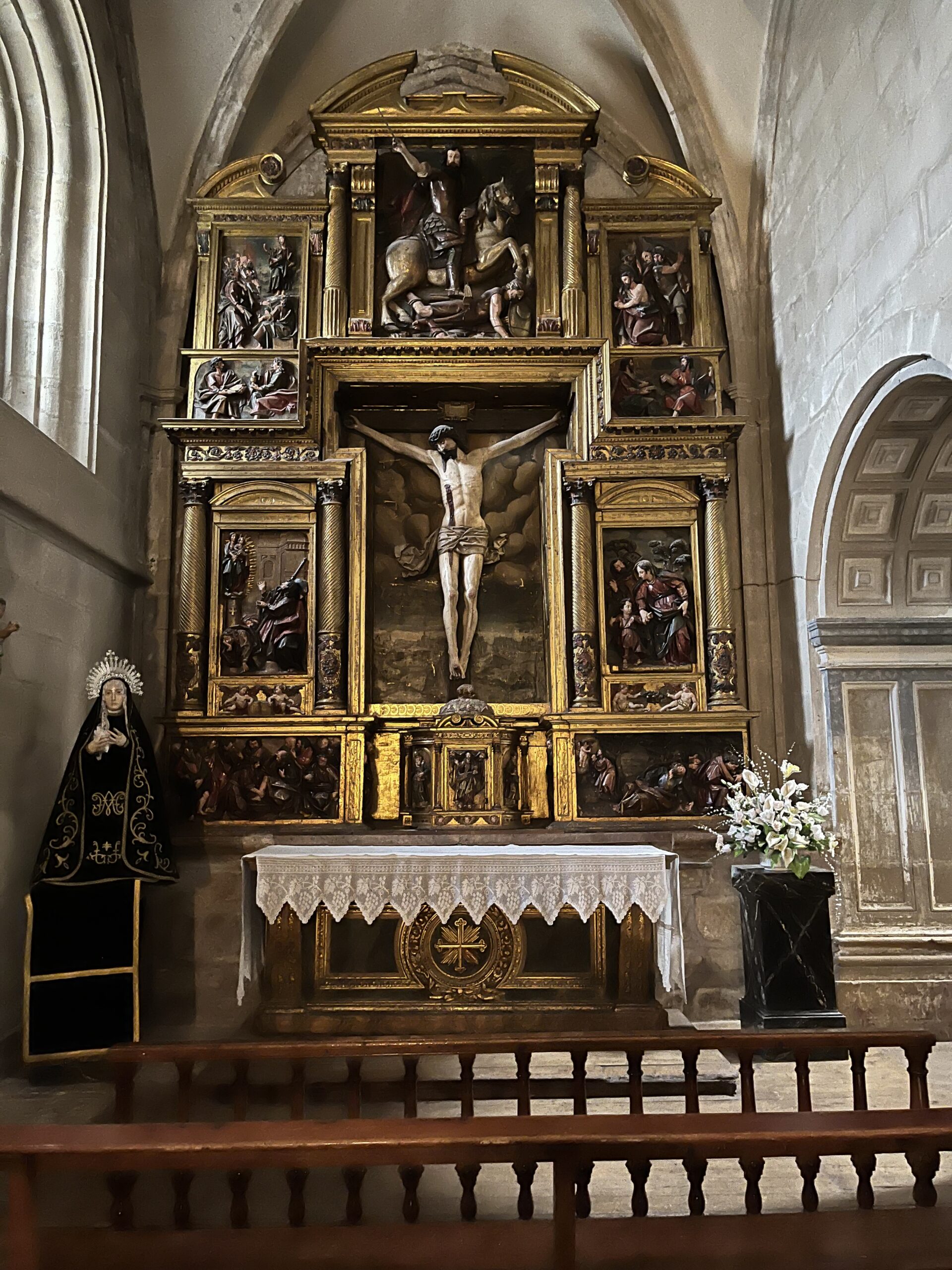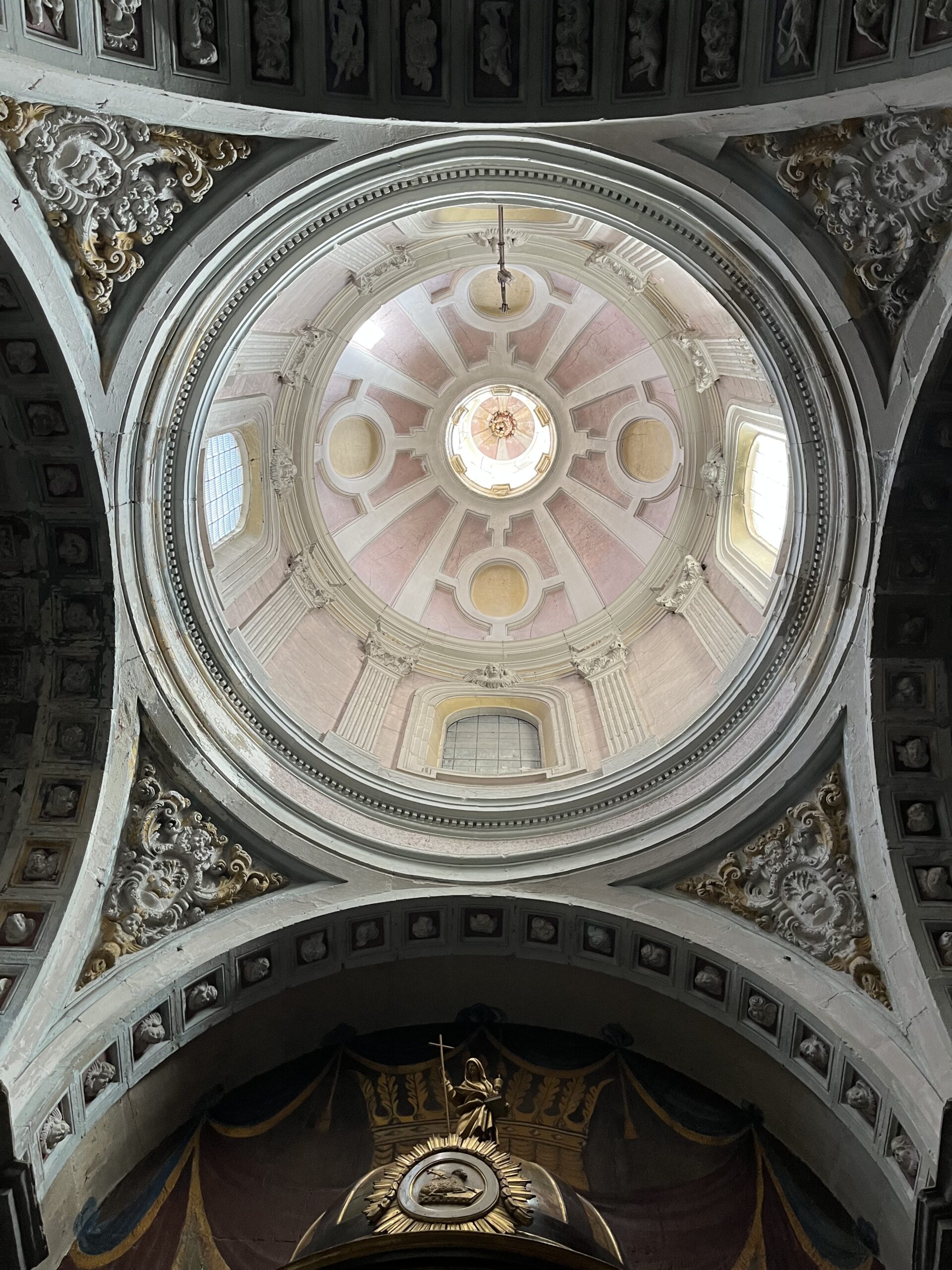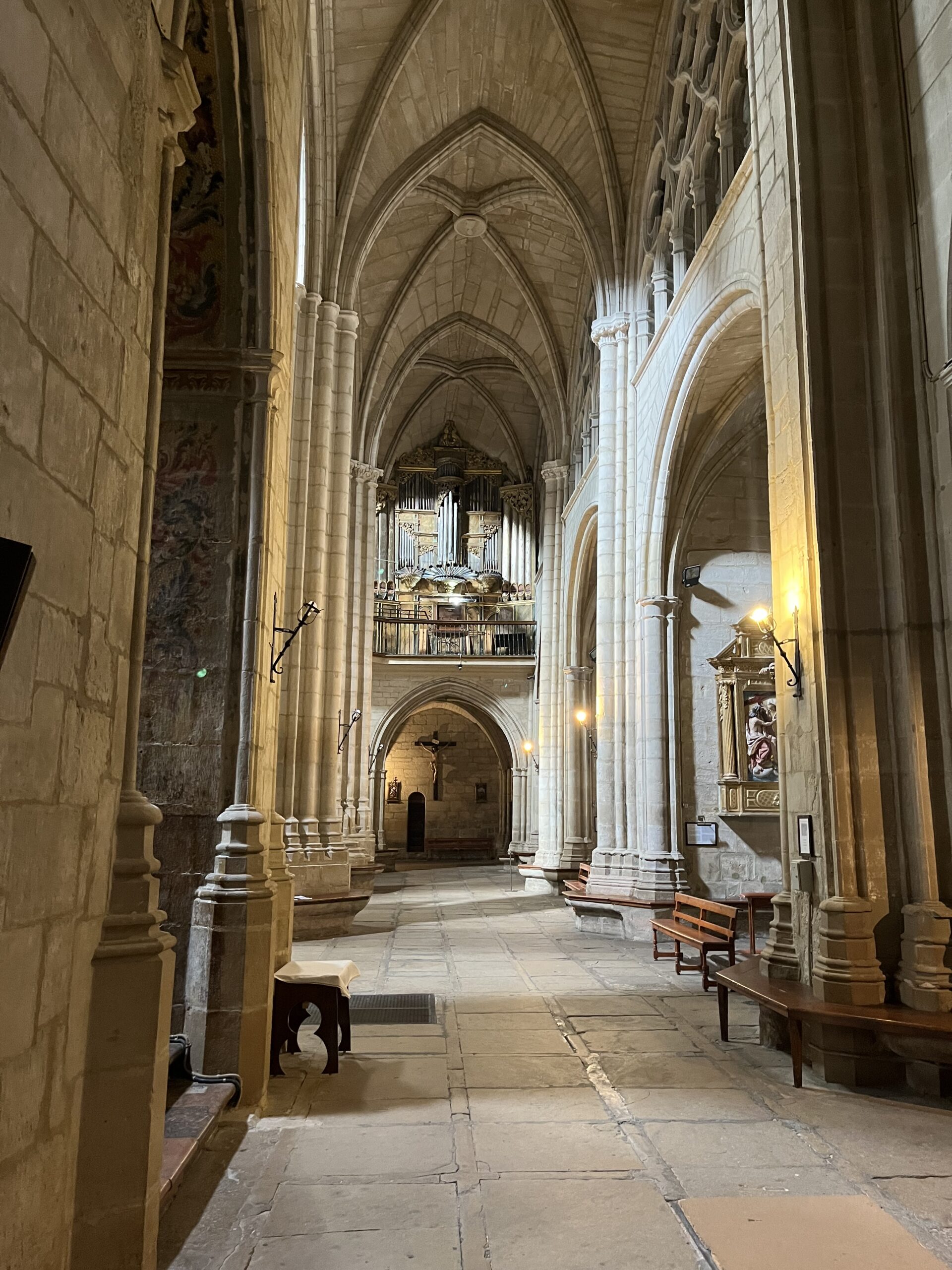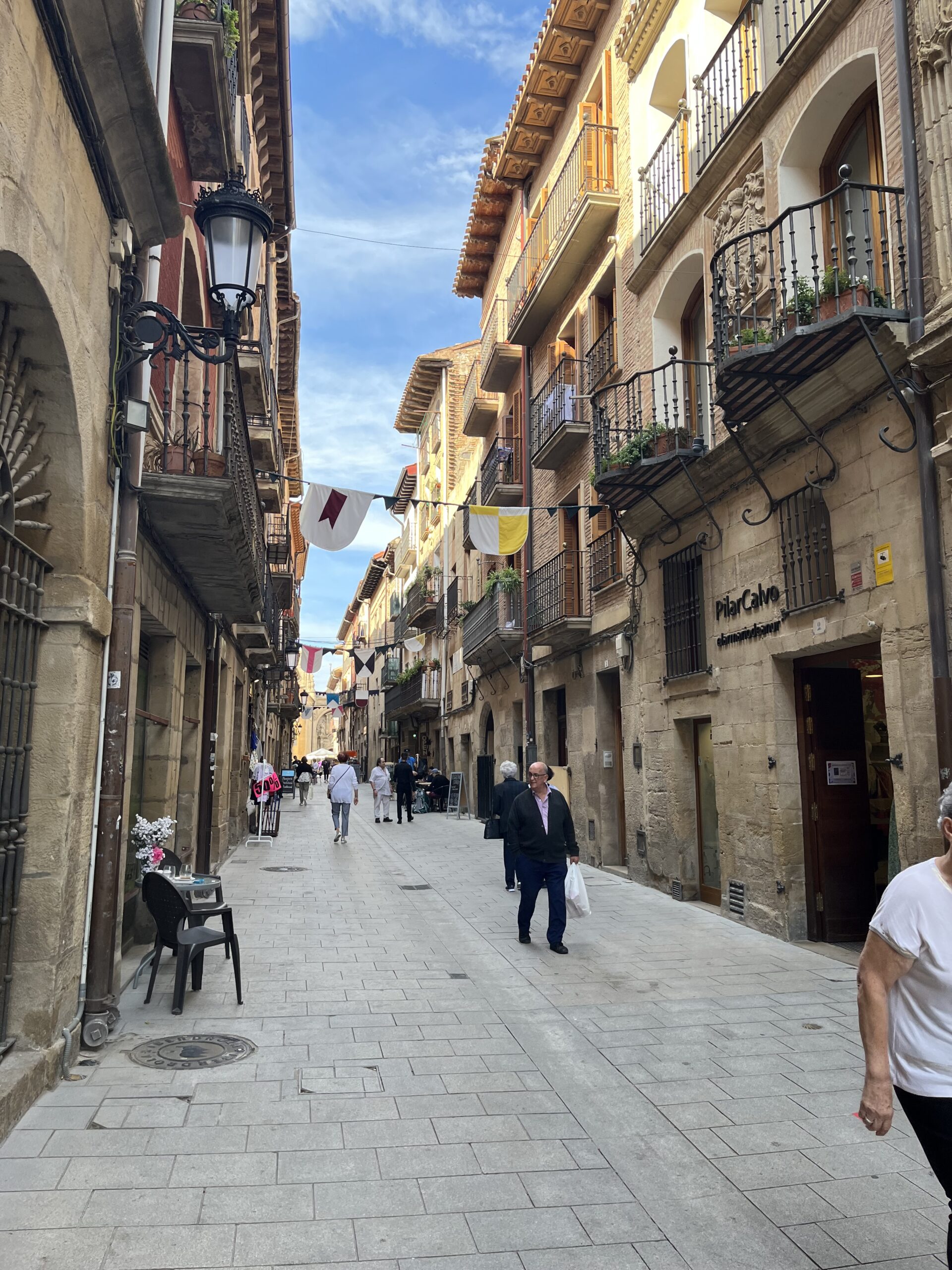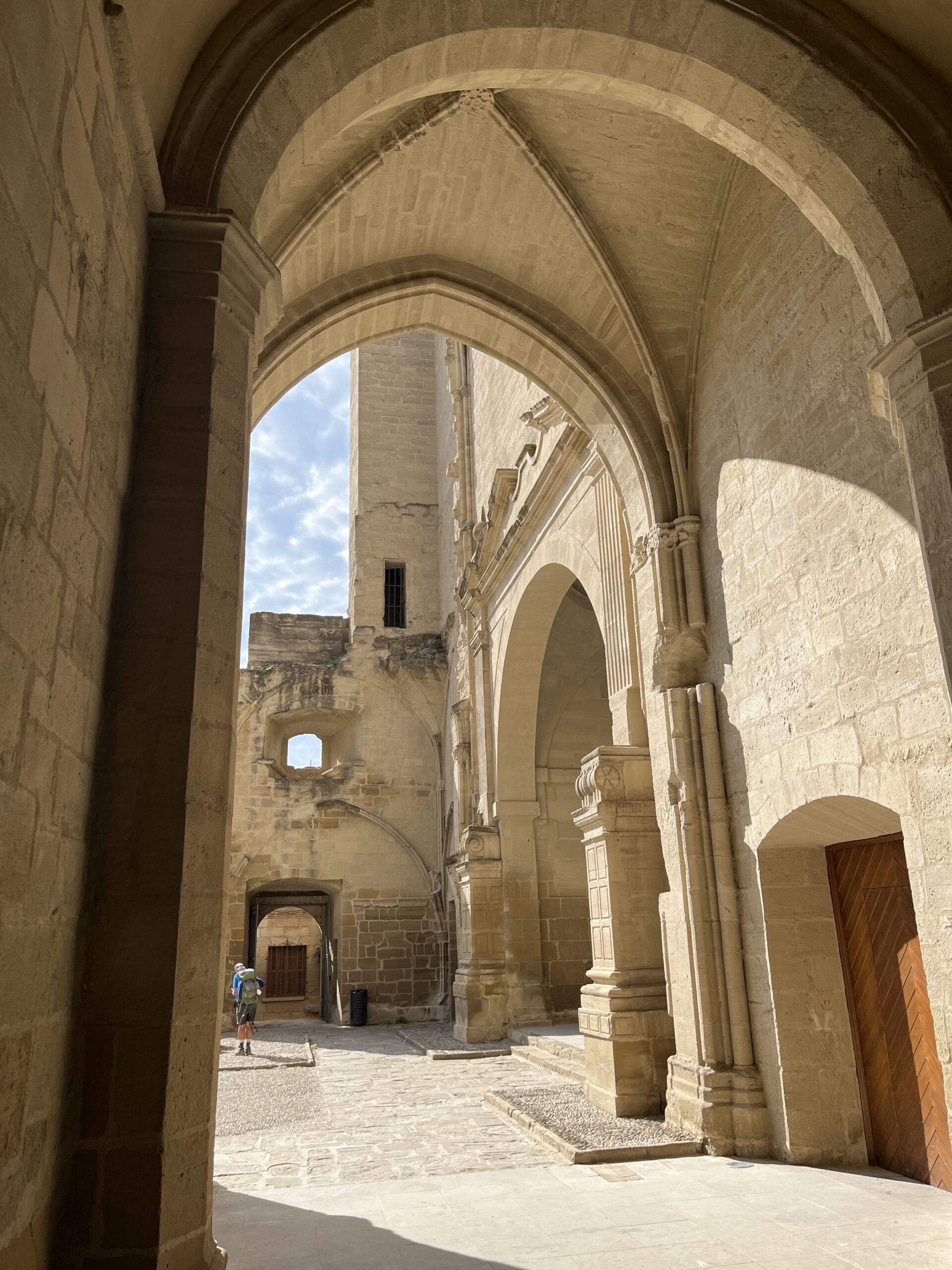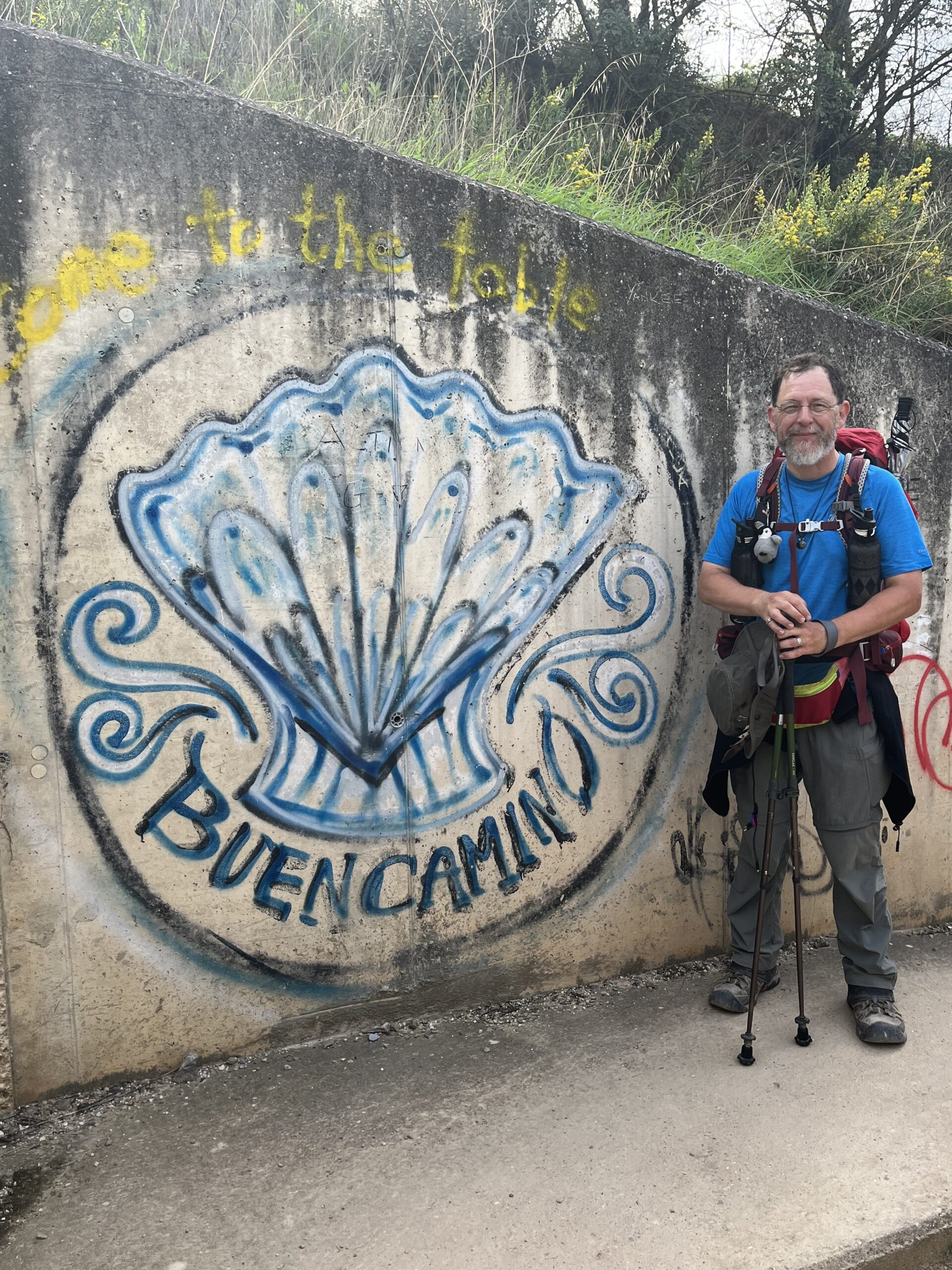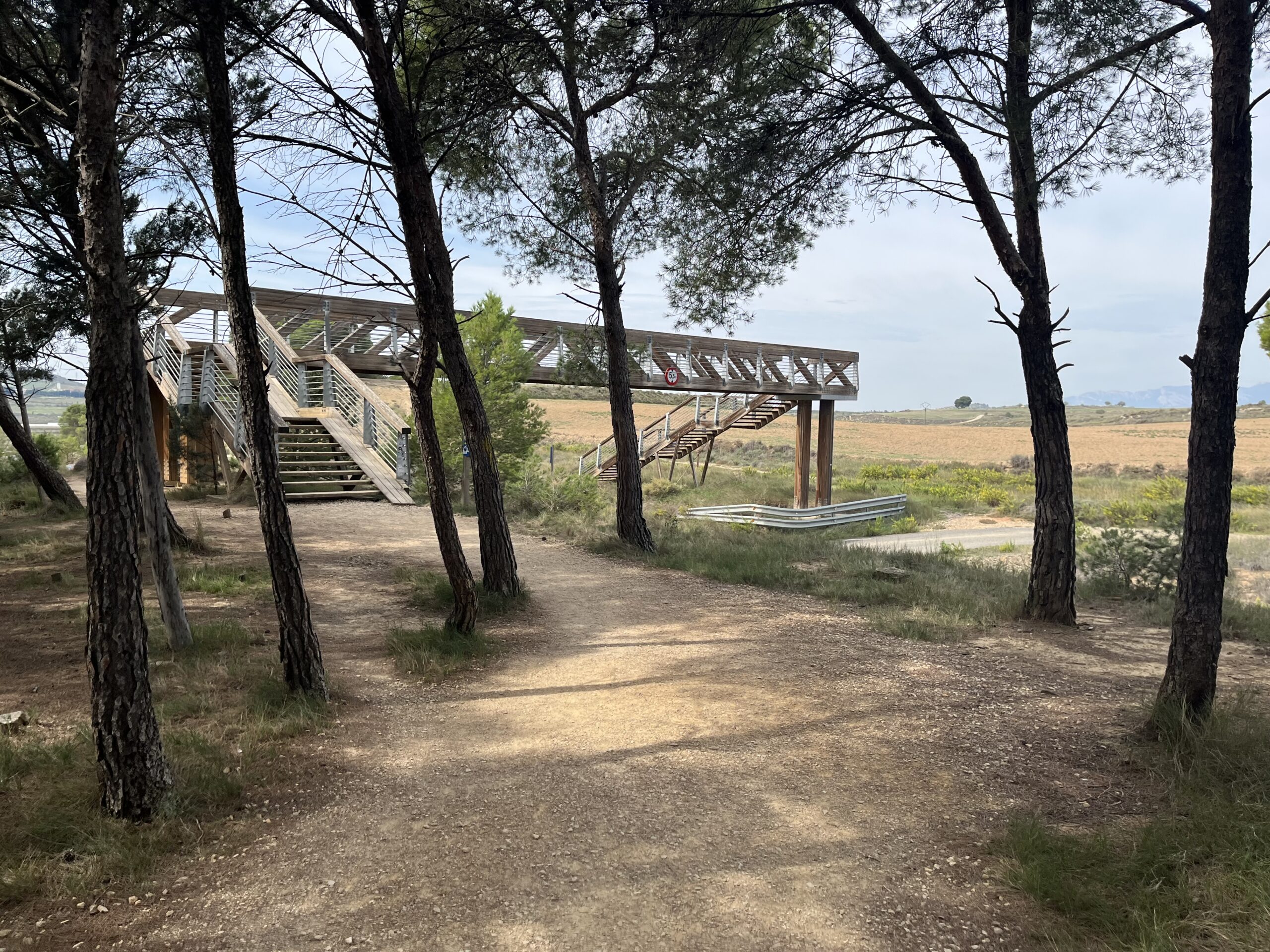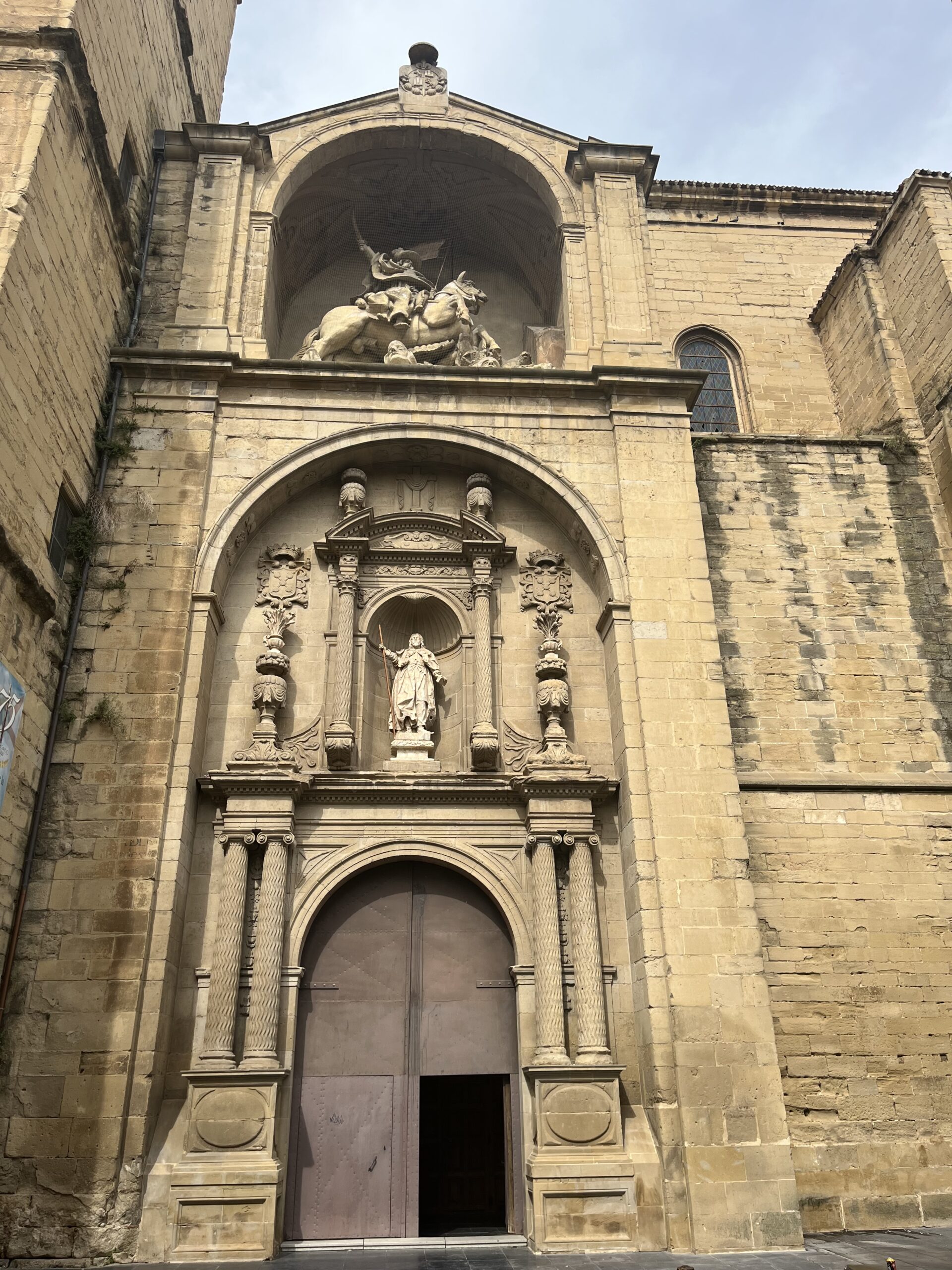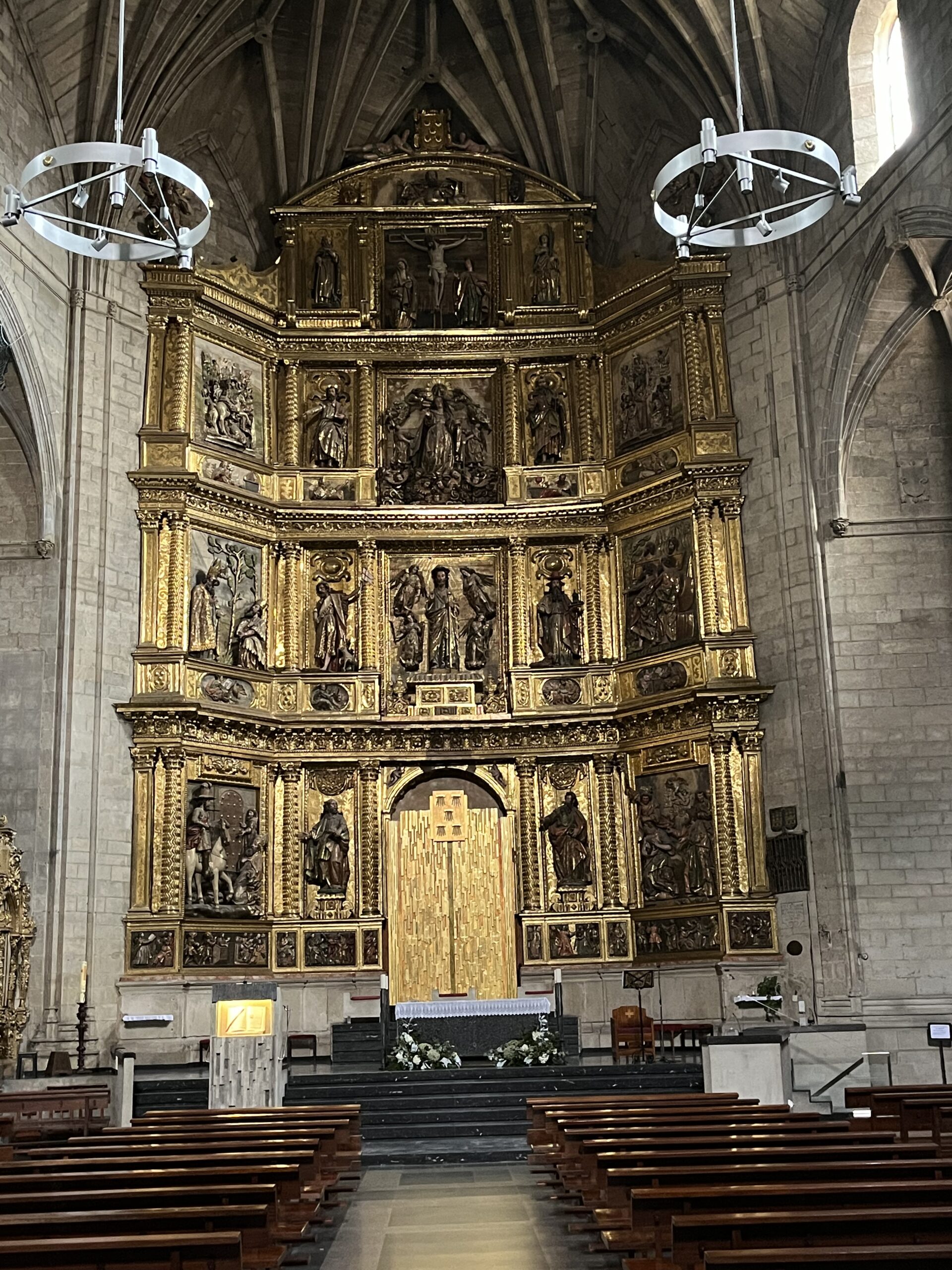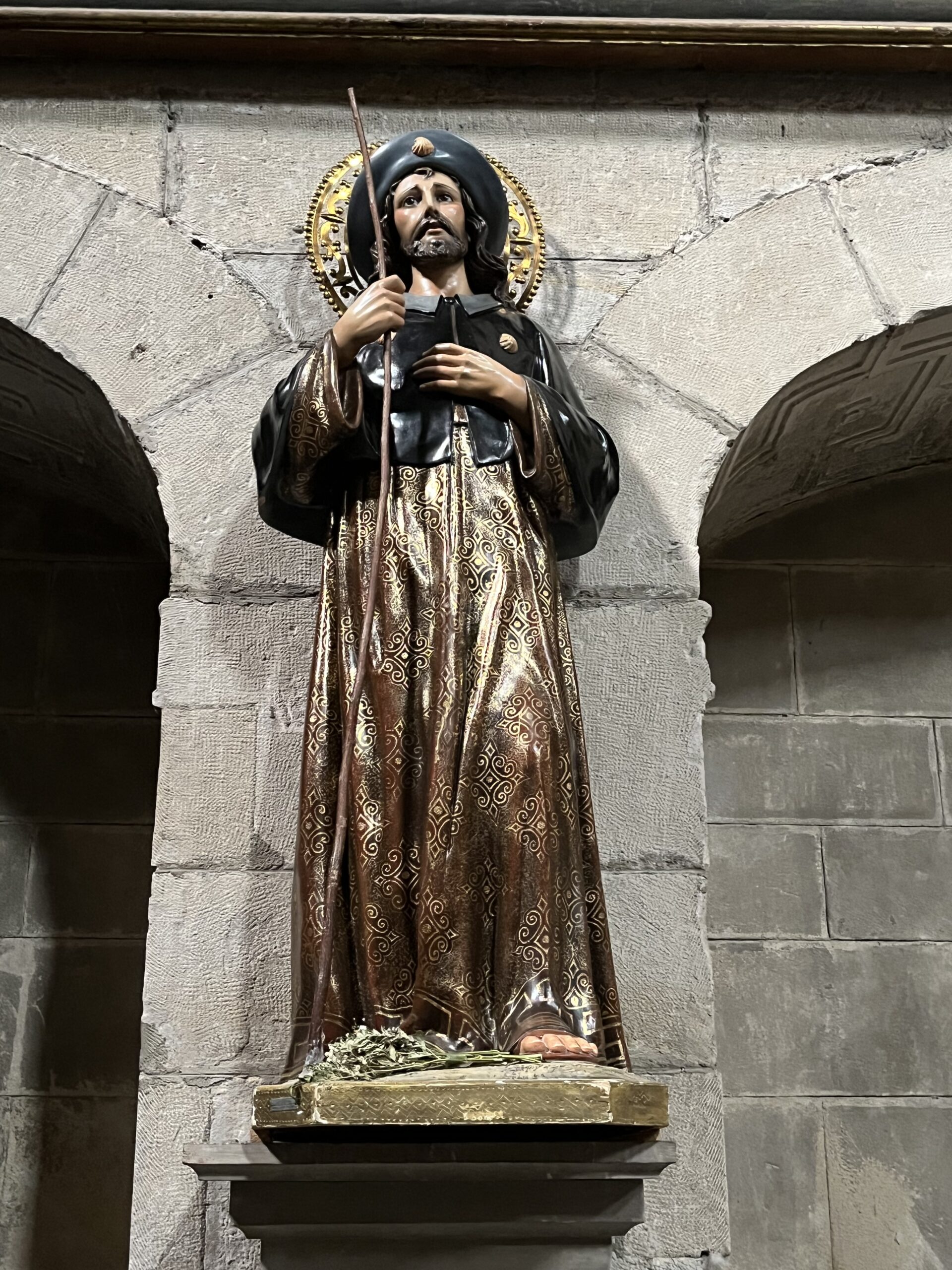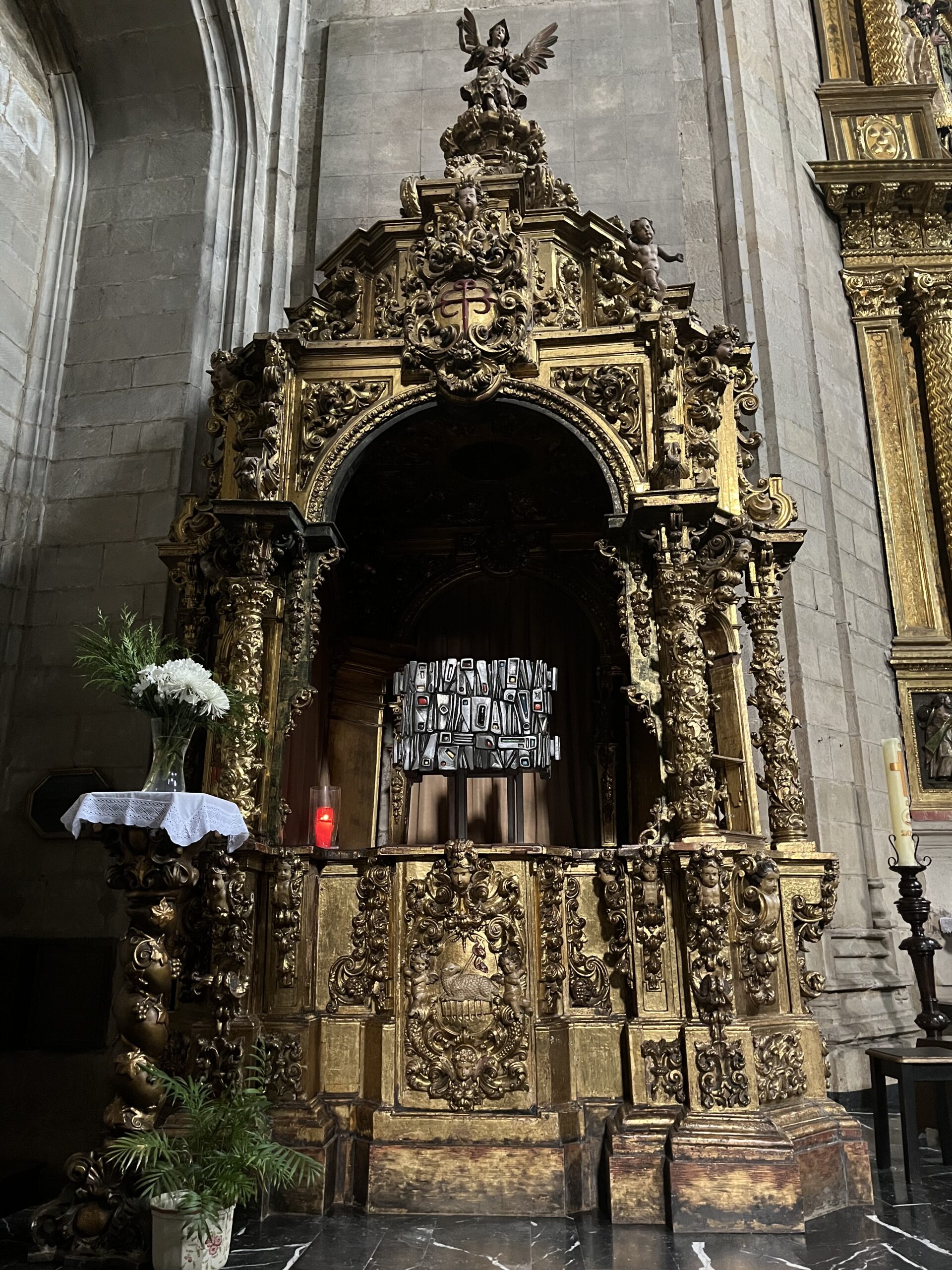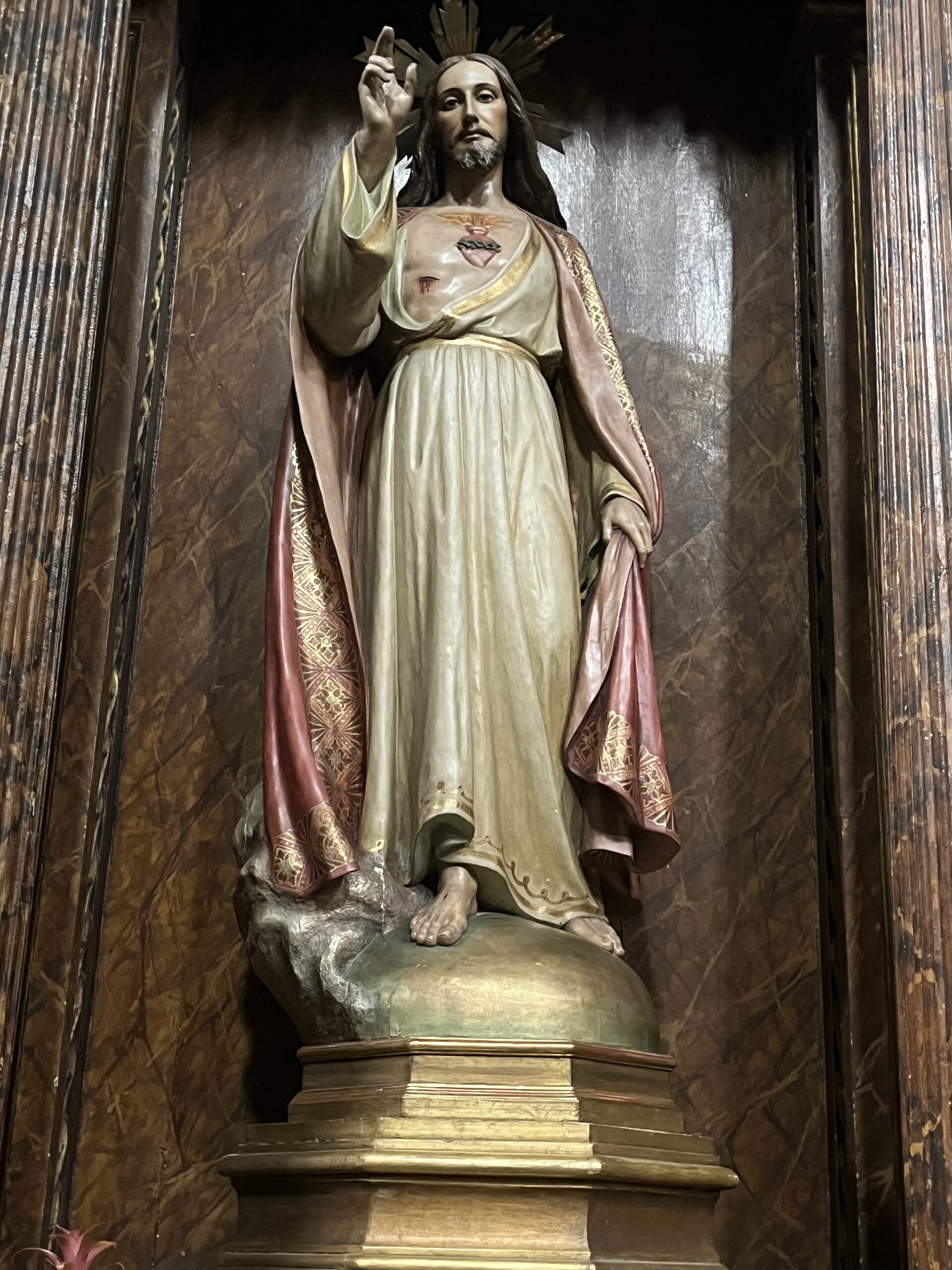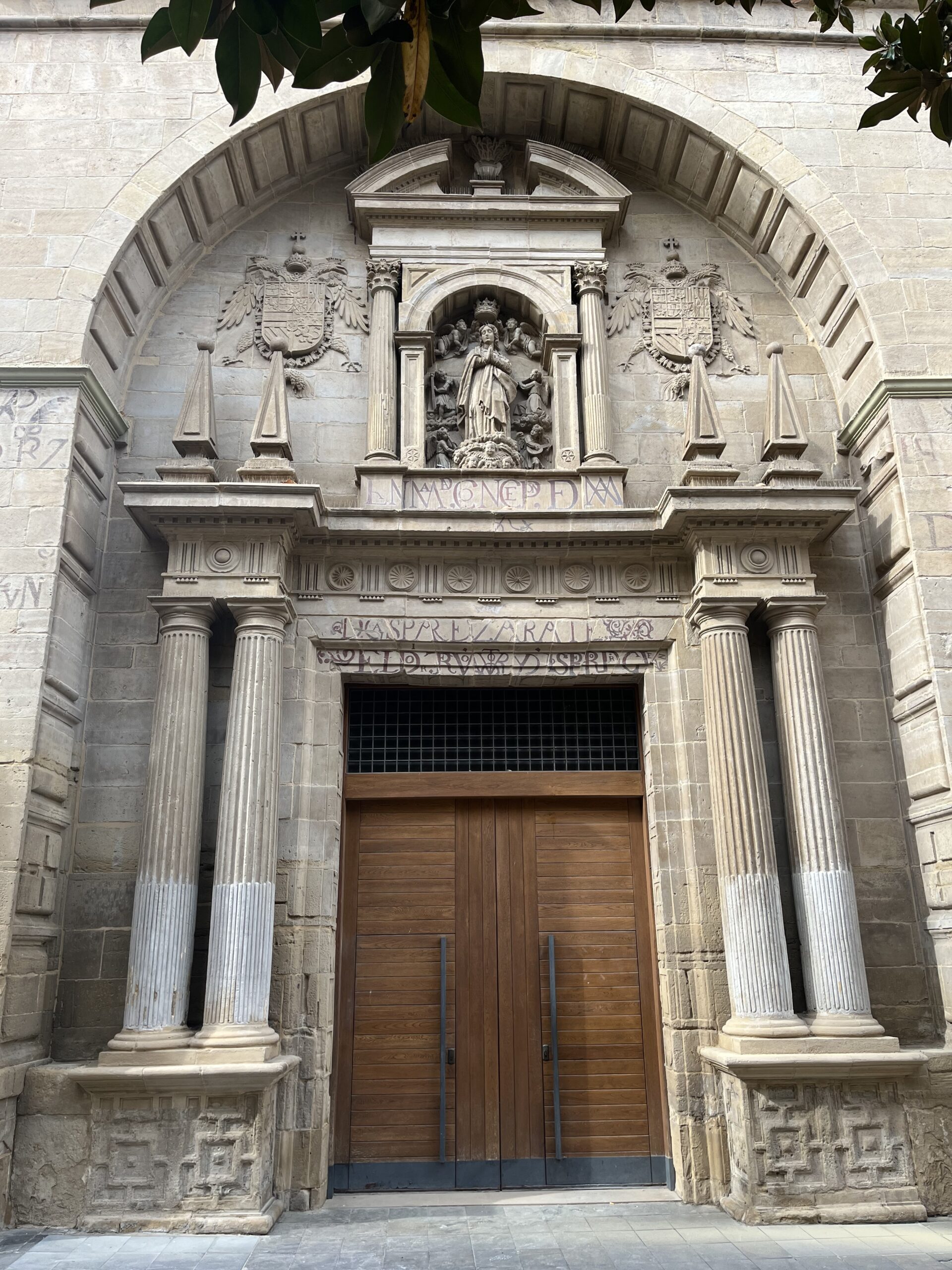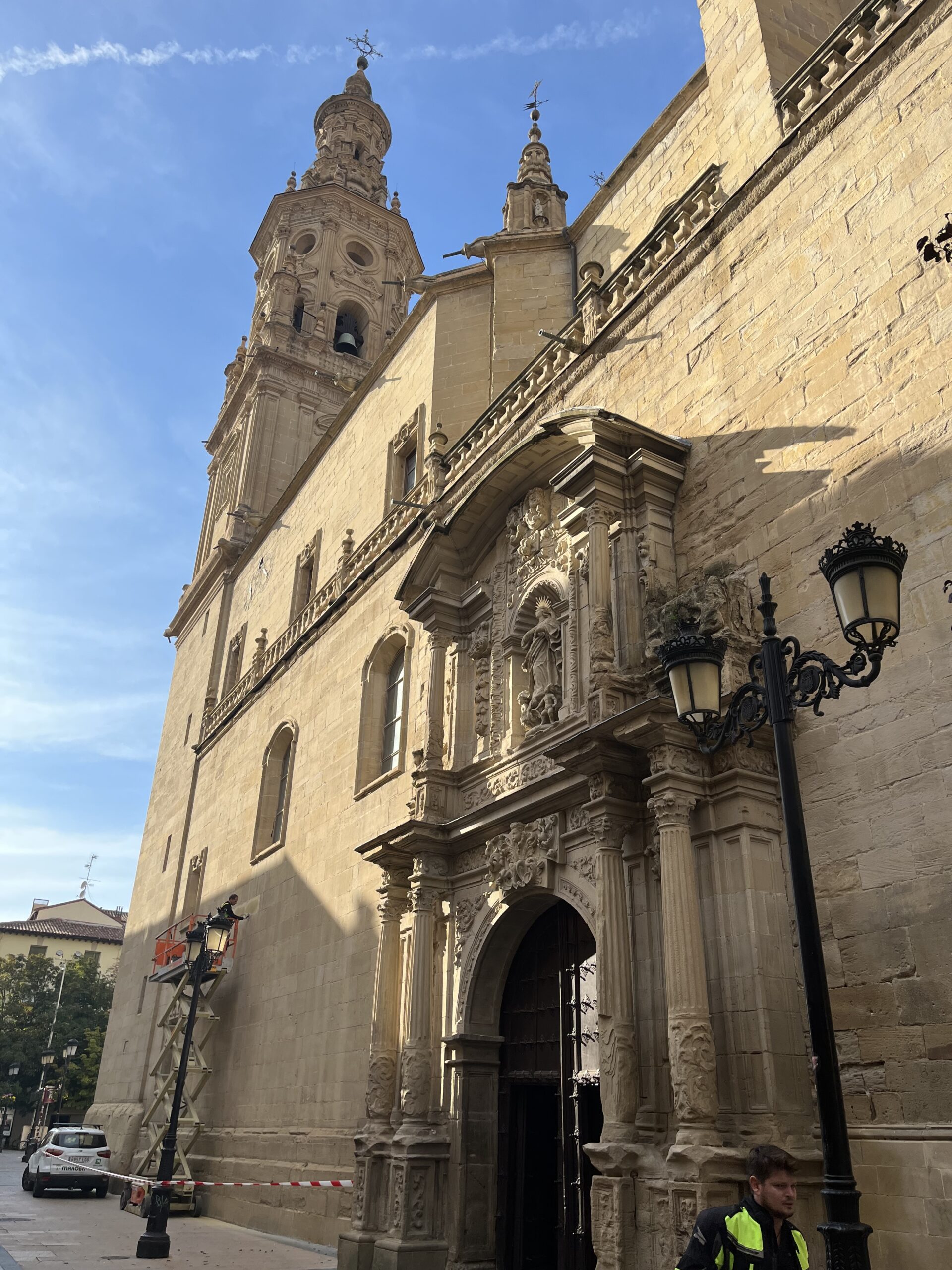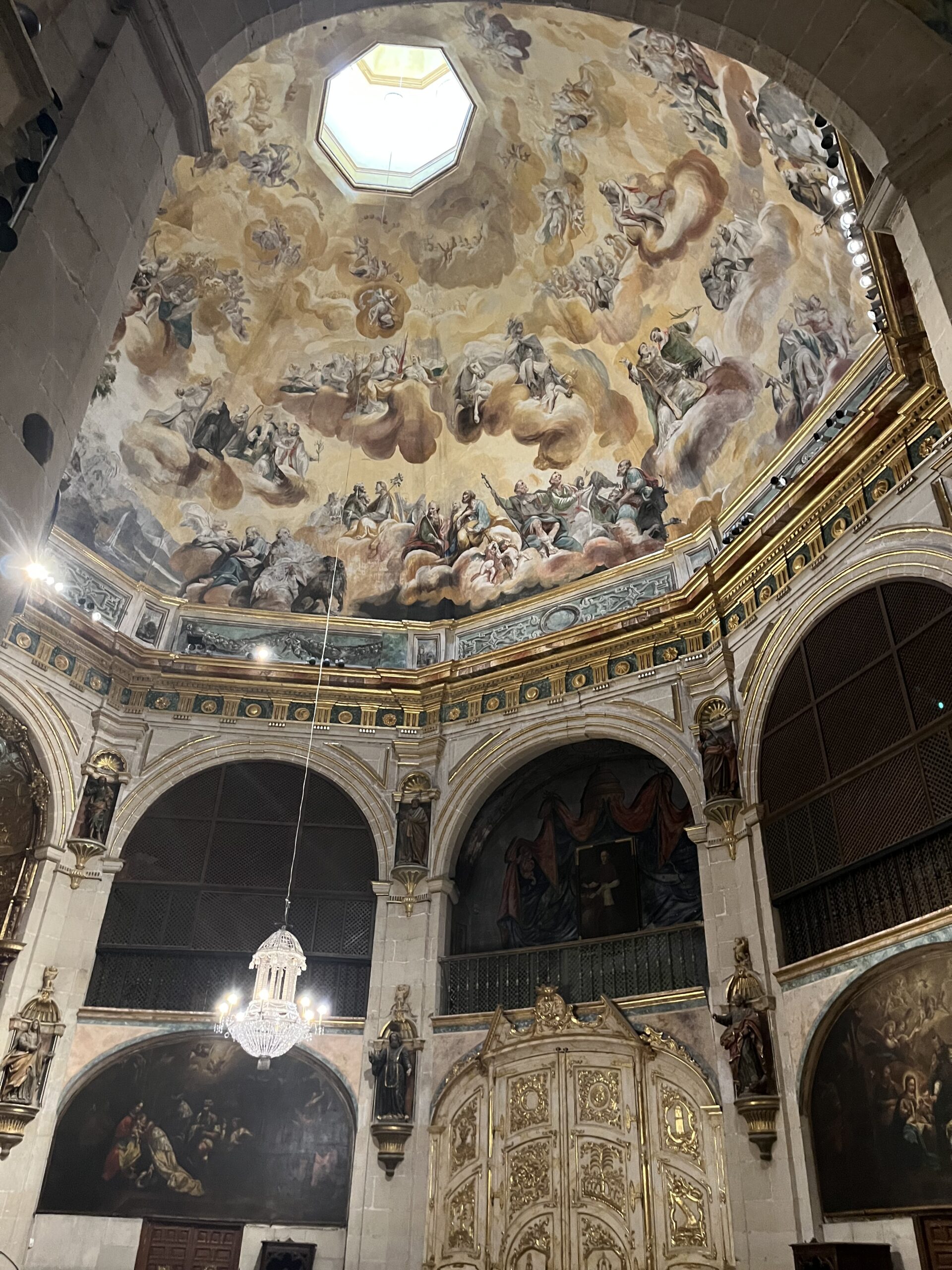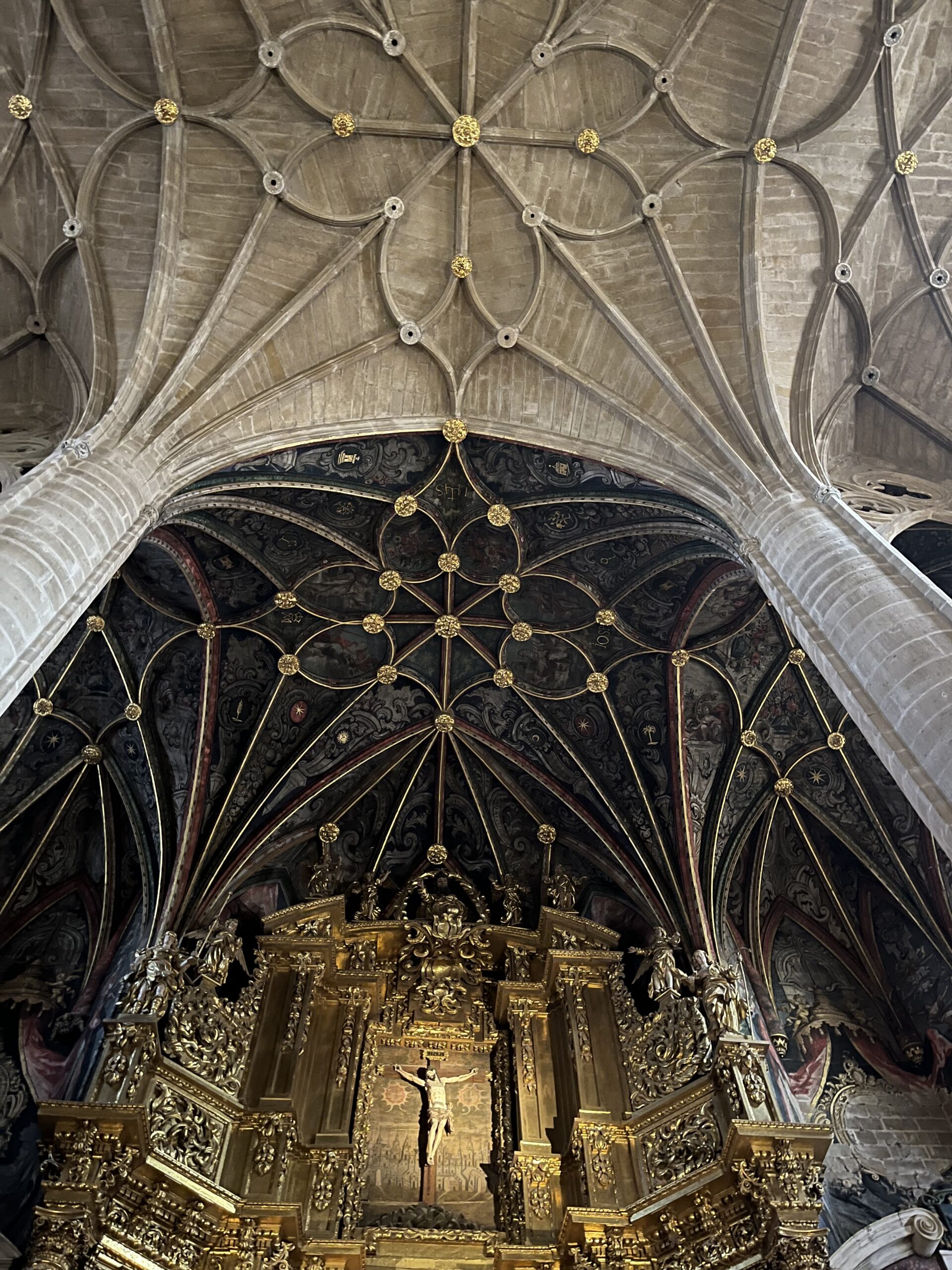Via Podiensis: Vineyards and Olive Groves
I knew today was going to be a long, hot day, so I broke my rule about starting in the dark in Spain. After a hearty Austrian breakfast featuring good brown bread, I said goodbye to many of my Camino companions for the past few days: Allison and Morgan, Rebecca, even Philip. Given our schedules for the next few days, it was unlikely I would see any of them before Santiago.
At breakfast I spoke with a German woman named Susanna, who had started walking from her home in the Black Forest. So now that’s three out of five Germans I’ve met who started walking from their front door. Turns out that she had walked with Steve briefly (remember Steve? I met him on the third day of my Camino). She met him once in Germany near the beginning, and once somewhere in Switzerland. I asked how it was possible that she could catch up with him – I know for a fact he walks 40 to 50 km a day – and she replied that Steve doesn’t walk on Sundays. This, I had not known. Of course, from Saint-Jean, Steve’s plan was to turn north and then walk the northern coastal route. The odds of meeting up with him again are slim to none, unless we meet in Santiago.
I left the albergue at about 6:50 AM. The street lights were bright, and there was already a stream of pilgrims ahead of me.
Once the Camino left town, it followed a gravel road that eventually became hard packed earth, perfect for walking.
The little towns and villages twinkled like constellations in the night, while the other side of the road yawned with impenetrable darkness.
Slowly, dawn creeped up behind me, and by about 7:30 I turned off my flashlight. It was only now that the full extent of the grasslands and fields that stretched to either side became evident. Beyond them I could see the dark outlines of hills and perhaps even larger, darker shadows beyond.
Shortly after this, the Camino split from the main road. I took advantage of a nearby bench to take off my fleece.
The Way was more stone and gravel now, and definitely a little more uneven. This continued until we joined the road for some good old fashion roadwalking. At some point during this stretch, I was swarmed by mosquitoes. They would land just as fast as I could brush them off. My only real strategy for the moment was to walk faster.
The road took me into the little hilltop town of Sansol, which just an hour ago had been a distant glittering constellation. The sun rose over the eastern hills as I was entering the town, just after 8 AM.
Second breakfast was café con leche and a croissant. I also dug out my long sleeves and, for only the second time on this pilgrimage, my bug net. With the black veil of the bug net over my head, I left about 8:30, looking like I was a hiker going to Victorian funeral.
The Camino left Sansol on a stone path, and less than a kilometer later I was in the neighboring hill town of Torres del Rio.
My first stop was the 12th century church of Santo Sepulcro. Designed as a miniature of the church of the holy sepulcher, this (supposedly Templar) church has a lot in common with Eunate of a few days ago. Like Eunate, it is built on an octagonal floor plan, with an extended apse at one end. Unlike Eunate, it’s in the middle of a town.
Also like Eunate, its opening hours are a little difficult. This is the third time I’ve passed this church, and it’s the first time that it has been open. The interior is simple and unadorned, though there are relief carvings on the vault of the ceiling – Latin letters. I have no idea what they might mean.
I found the medieval crucifix deeply moving, with its representation of Christ as King, but crucified with a look of sorrowful serenity. I’ve never seen anything quite like it before.
I prayed here for the intentions of the Camino and moved on through the town. Soon afterwards, I was once again on a stone and gravel road through endless rolling hills of grass. Hills and even mountains could now be seen in the distance.
I took off the bug net and long sleeves as a distant church bell chimed 9 AM, and I immediately felt cooler and peppier.
The Camino took a weird concrete path down a fairly steep hill into a vineyard on one side and an olive grove on the other. There were workers in the vineyard, and I was immediately reminded of the parable, which was so important to Francine and I on our first Camino.
And then it was back to gravel and stone through field and scrub, with these intermittent concrete sections on the hills.
This is another one of these ideas that was probably dreamed up in a committee of people who wanted to help the pilgrims but have never actually walked themselves. Concrete is treacherous and slippery on hills when it is wet, a recipe for injury.
For a while, the Camino path followed the ridgeline looking down on a highway before veering off into a stand of mostly dead pine trees, and then passed along series of cairns and a tree bedecked with ribbons and other mementos.
Minutes later, we passed a locked up old chapel – the Ermita de Poyo – and white appear to be an outdoor sanctuary, complete with altar, seating for clergy, and a credence table, all made of stone.
Following a steep (concrete) descent, I was now walking on the shoulder of the highway. Fortunately, this only lasted a couple of hundred meters before I crossed the highway and headed back into open country. A sign indicated about 17 km to Logroño, and it was just past 9:30 AM. with a planned lunch break in Viana, I hoped to be at my destination by 2:30 PM or so.
Although the sky was overcast, it was getting to be quite warm. Fortunately, there were frequent cool breezes that kept me going.
I crossed the highway again, and now the Camino began descending into a new valley on the other side of the ridge line. Far in the distance I could see the outlines of a great city.
I had some beautiful views of the valley and the distant mountains as I descended. The way down was quite uneven, and at times very steep.
The floor of the valley, when I finally reached it, was covered in grapevines. And what do we know about valleys? We know that if we climb down into the valley, we must inevitably climb up out of it as well. And so, after traversing the vineyard for sometime, the Camino began its climb up. Thankfully this time it was packed earth and stone and not concrete.
I got to the top of the first rise, and I put up the umbrella. The Camino took a bit of a dip, but then went right back to climbing.
At the top of the second rise, I could again see the city in the distance, and it occurred to me that it must be my destination for today: Logroño. It looked vast compared to any place I had been since Pamplona.
There was a bit of highway shoulder walking, but soon I was back on a path heading vaguely in the direction of the city. This would happen several more times through the morning.
As I approached Viana, I fell into walking with Dennis from Oregon. Great conversation until we got to the city, which is his destination for the day and my lunch break.
We arrived just after 11, and I headed for the Pilgrims’ Oasis, the café owned by the folks who ran the food truck I went to the other day. After a panini sandwich, I backtracked slightly to the 14th century church of Santa Maria de las Asunción, which, among other things contains the tomb of Cesar Borgia.
Like Pamplona Cathedral, this is a Catholic Church whose exterior has been covered over by a much later façade. It seems an awful shame to have these empty Gothic windows with walls behind them. The altars and their retablos are uniformly Baroque, with a couple of odd exceptions. There’s a chapel of Saint Mary Magdalene located under a dome behind the sanctuary that is very much neoclassical. There’s also a chapel of St. John the Baptist, containing three altars itself, which is likewise neoclassical.
The whole building is magnificent; I particularly like the way they were able to blend the Baroque into the existing Gothic structure. I think it was done with real sensitivity and fine attention to detail.
After a too short a visit, I prayed for the intentions and moved on down the street to the ruins of the 13th century church of San Pedro. These ruins, which are preserved as an event space, are a sobering reminder of the fragility of any monument constructed by human hands, whether to man’s glory or to God’s. All things pass.
Moved by this melancholy thought, I prayed here as well before starting on the last 10 km to Logroño. Or possibly 12 km. Reports varied.
After just a bit of urban walking, the Camino ducked down a gravel alleyway which soon headed out into the countryside. It was about 12:20 PM, and it was cloudy enough that I didn’t bother with the umbrella.
The gravel would occasionally turn into an asphalt road for stretches, and eventually into a dirt road through farmland and scrub. Just after 1 PM, it was warm enough and clear enough that the umbrella went back up.
So, of course, just a few minutes later the Camino diverted through some lovely shady trees. It didn’t last long, though, and after clambering over a bridge over a highway, it was back to smooth hard packed gravel. The Camino ran parallel to and overlooking the highway, sometimes through stretches of tree cover.
At about 1:20 PM, I left the intermittent tree cover for a warehouse district that marked the end of the modern region of Navarra. I walked on a sidewalk next to a highway into the region of La Rioja.
I also passed a blaze that seem to indicate that here was where the GR 65, which I have been walking more or less since Le Puy, parted ways with the Camino.
I continued on an asphalt path that snaked its way through and under the various highways and roads entering the big city.
By now, it was after 1:30 PM. Although the temperature was supposedly only 75°, it felt much hotter walking on the asphalt. I was sweating like crazy. I was drinking through my water at an alarming rate.
But I could now see the immensity of the city laid out before me, and it was truly something to behold.
The path eventually became a road, with occasional houses on either side that grew more frequent as I walked down into the valley where the city was located. Then there was a little gap of farms and gardens, not more than a half a kilometer, and I crossed the street and was strolling down a broad promenade in a formal urban park. Off to the left, a great river rushed over a cascade of rocks.
I was able to replenish my water supply at a park fountain.
I climbed a set of stairs to the great bridge over the River Ebro, and crossed into the city of Logroño. The umbrella came down as I entered the narrow streets of the city.
I checked into the albergue parroquial, where just a few weeks ago Francine and our friend Becky had been serving as volunteer hospitaleras. I received a care package there, courtesy of Michele who is one of the employees. This was my new pair of hiking shoes that Francine brought from home for me, plus a couple of other useful odds and ends and goodies.
It was like Christmas day!
After the usual program ablutions, I met up with Tara and Rebecca and the three of us visited and prayed in the church next-door to the albergue, which is the church of Santiago el Real.
Architecturally and artistically, the church belongs entirely to the 16th and 17th centuries. While I am not particularly a fan of Baroque, I found some of the statuary quite affecting, particularly one of the Sacred Heart and one of Santiago Peregrino. There are also some modern additions, most of which complement the rest of the art and architecture with the glaring exception of the tabernacle.
Then we did rounds of several of the other churches of the city, all of which were locked.
Then to a local gear shop. I was in desperate need of hiking pants that actually fit, Tara was looking for lighter shoes, and Rebecca for shorts and a better fleece.
We also stopped at a pharmacy, and I got something for the dozens of mosquito bites on my arms and neck.
And then to the Cathedral, Concatedral de Santa María de la Redonda. Like many of the churches of this region, much of the interior is Gothic architecture and Baroque altars and retablos. In fact, the footprint of the church is over the original Romanesque structure. The last bit of this original building was swept away in the 18th century with the construction of a chapel of Our Lady of the Angels on the opposite end of the church from the sanctuary.
The apse, meanwhile, has been completely rebuilt and sits now under three Renaissance domes.
I still can’t quite get Baroque exuberance into my bones, and I almost find it too distracting to pray. Nevertheless, I offered my prayer for the intentions of the Camino.
Then Mass, a communal dinner, and Night Prayer in the choir of the church. A truly wonderful evening.
Date: 27 September 2023
Place: Logroño
Today started: Los Arcos
Today’s Photos!






